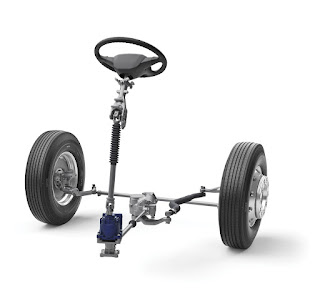- Get link
- X
- Other Apps
- Get link
- X
- Other Apps
Automotive Steering System Market Snapshot:
Playing a pivotal role in directing a vehicle, the automotive steering system has transformed from hydraulic systems to electric power steering (EPS) and steer-by-wire technologies. Influential factors include trends in vehicle production, consumer preferences, and regulatory obligations.
The global automotive steering system market is poised for substantial growth, with a forecasted expansion at a robust Compound Annual Growth Rate (CAGR) of 4.8%. This growth trajectory anticipates a noteworthy increase in market valuation, catapulting from the anticipated US$23.4 billion in 2023 to a projected US$32.5 billion by the conclusion of 2030.
Market Dynamics:
- Market Drivers:
Technological Advancements: Integration of advanced technologies, such as steer-by-wire and lane-keeping assist, is driving market growth.
Safety Regulations: Stringent safety norms and regulations globally are increasing the adoption of advanced steering systems to enhance vehicle safety.
Rising Electric Vehicle Adoption: The increasing popularity of electric vehicles is fueling the demand for electric power steering systems.
- Market Restraints:
High Initial Costs: Advanced steering systems often come with higher initial costs, posing a challenge for widespread adoption, especially in entry-level vehicles.
Complexity: The integration of advanced technologies adds complexity, requiring skilled technicians for maintenance and repairs.
Global Supply Chain Challenges: The automotive industry is susceptible to disruptions in the global supply chain, affecting the availability of steering system components.
Market Segmentation:
- By Type:
- Hydraulic Power Steering (HPS)
- Electric Power Steering (EPS)
- Steer-by-Wire Systems
- By Vehicle Type:
- Passenger Vehicles
- Commercial Vehicles
- By Region:
- North America
- Europe
- Asia-Pacific
- Latin America
- Middle East & Africa
Competitive Landscape:
The automotive steering system market is characterized by intense competition among key players. Major companies include ZF Friedrichshafen AG, Robert Bosch GmbH, JTEKT Corporation, NSK Ltd., and Nexteer Automotive. Strategic collaborations, partnerships, and technological innovations are key strategies adopted by market players to gain a competitive edge.
Technological Trends:
- Autonomous Driving Integration: Steering systems are evolving to support autonomous driving, with features like lane-keeping assist and automated parking becoming increasingly common.
- Electric and Electronic Integration: The shift towards electric vehicles is driving the integration of electronic components in steering systems, enhancing efficiency and responsiveness.
- Sustainability: Growing emphasis on sustainability is leading to the development of eco-friendly and energy-efficient steering technologies.
Future Outlook:
The automotive steering system market is poised for significant growth, driven by ongoing technological advancements, increasing demand for electric vehicles, and a focus on enhancing vehicle safety. The adoption of steer-by-wire systems is expected to rise, offering improved vehicle control and paving the way for more sophisticated autonomous driving features.
Conclusion:
The automotive steering system market is experiencing a transformative phase, driven by technological innovations and evolving consumer preferences. As the industry continues to adapt to changing dynamics, companies that strategically invest in research and development and align with sustainability goals are likely to thrive in the competitive landscape. The future promises a landscape where steering systems play a crucial role not only in vehicle control but also in shaping the future of mobility.
Dive into the Exclusive "PMR" Articles –
About Persistence Market Research:
Business intelligence is the foundation of every business model employed by Persistence Market Research. Multi-dimensional sources are being put to work, which include big data, customer experience analytics, and real-time data collection. Thus, working on “micros” by Persistence Market Research helps companies overcome their “macro” business challenges.
Persistence Market Research is always way ahead of its time. In other words, it tables market solutions by stepping into the companies’/clients’ shoes much before they themselves have a sneak pick into the market. The pro-active approach followed by experts at Persistence Market Research helps companies/clients lay their hands on techno-commercial insights beforehand, so that the subsequent course of action could be simplified on their part.
Automotive Steering System Market
Automotive Steering System Market Analysis
Automotive Steering System Market Share
Automotive Steering System Market Size
Automotive Steering System Market Trends
- Get link
- X
- Other Apps

Comments
Post a Comment